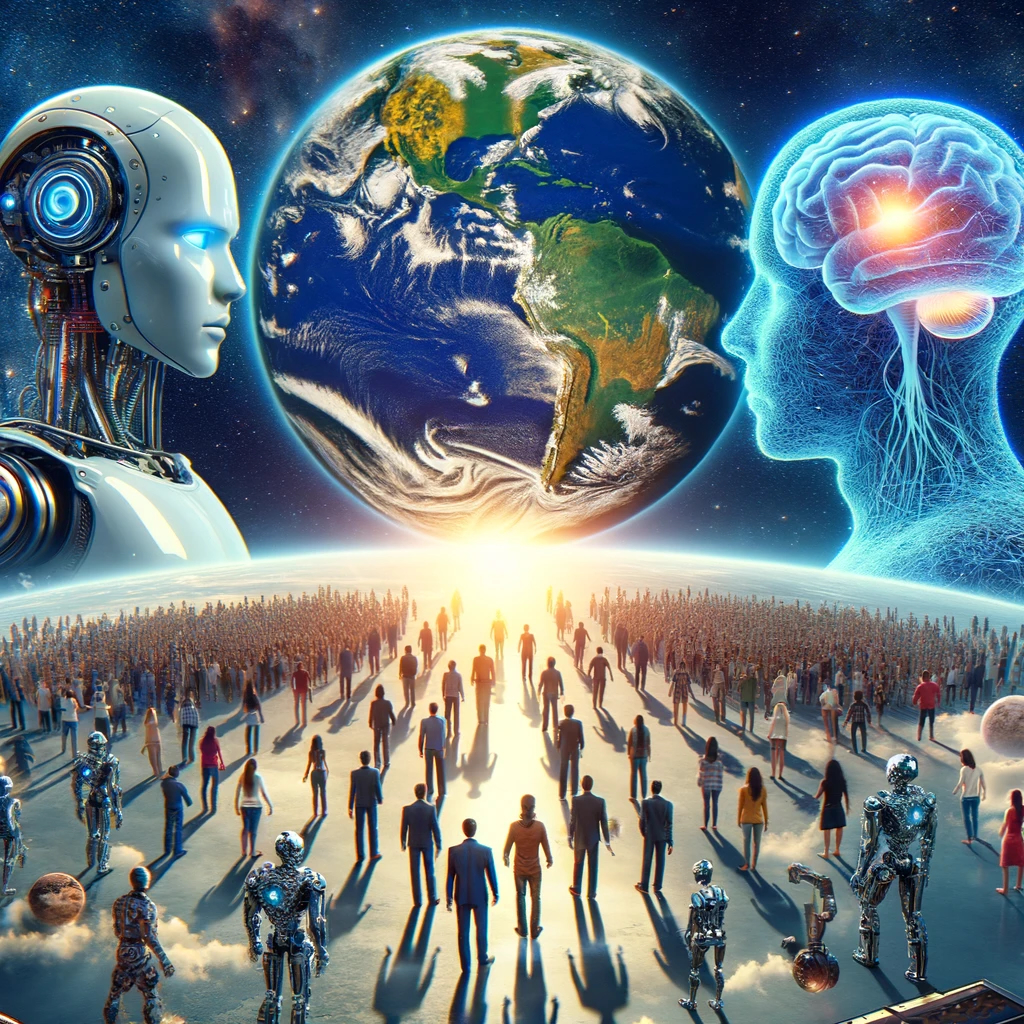AI vs. Humanity: The Real Threat to Our Survival?
While the debates on artificial intelligence (AI) often frame it as a potential scourge on human society that could destroy the planet and the human species, here is a counter-narrative that deserves urgent attention.
In our preoccupation with hypothetical AI-driven apocalypses, we risk overlooking the tangible harm we are already causing our world and ourselves.
Humans, with our unrivaled cognitive capabilities and innovative prowess, are paradoxically our own worst enemy. Since the advent of the Industrial Revolution, our actions have inflicted immeasurable suffering on ourselves and caused widespread degradation of the natural world.
The Industrial Revolution was a turning point in human history, setting the stage for a rapidly escalating global environmental crisis. Coal-powered factories belched out smoke, ushering in unprecedented atmospheric pollution. Greenhouse gas emissions have skyrocketed since, with humans pumping an estimated 2.4 million pounds of carbon dioxide into the atmosphere every second. These emissions have resulted in a global temperature rise of 1.2 degrees Celsius since the pre-industrial era, setting the stage for extreme weather conditions, wildfires, and rising sea levels.
Perhaps more insidiously, these changes have amplified human suffering in myriad ways. Extreme temperatures kill 5 million people per year, according to the results of a 20-year study published in the Lancelet Planetary Health on July 7, 2021. The rising sea level has displaced communities worldwide, particularly in low-lying island nations such as Myanmar, Bangladesh, the Maldives, and Kiribati. Cyclone Mocha devastated Myanmar this past Sunday, May 14, forcing more than 750,000 people to flee low-lying areas. Cyclone Mocha follows one of Asia’s deadliest, Cyclone Nargis, which smashed into Myanmar’s Irrawaddy Delta and claimed 140,000 lives 15 years ago.
Simultaneously, extreme weather events exacerbated by climate change have resulted in catastrophic loss of life and property, such as the 2017 Atlantic hurricane season, which caused an estimated $282.16 billion in damages.
Furthermore, human activities have a disastrous impact on biodiversity, leading to the “sixth mass extinction.” Ironically, the extinction event is driven by human activity, not AI, primarily through the unsustainable use of land, water, and fossil-fuel-based energy sources that exacerbate climate change.
Habitat destruction, often to make way for agriculture and urbanization, has led to an estimated 68% decline in wildlife populations since 1970. Species like the Northern White Rhinoceros face extinction due to poaching driven by human greed. The knock-on effects of these losses are profound, disrupting ecosystems, undermining biodiversity and local livelihoods in developing countries, and destabilizing the delicate balance of our planet.
In addition, industrial pollution has seeped into our water bodies, contaminating them with heavy metals, chemicals, and microplastics. The Great Pacific Garbage Patch, a swirling gyre of plastic waste, now covers an estimated 1.6 million square kilometers, a grim testament to our disposable culture. Not only does this pollution devastate aquatic ecosystems, but it also impacts human health. Millions of people worldwide lack access to clean water, leading to diseases like cholera and dysentery.
While the situation may seem dire, we can mitigate these issues, and perhaps paradoxically, AI may be a significant part of the solution. Advanced machine learning models can help predict extreme weather events with improved accuracy, enabling us to prepare and reduce casualties. AI can also aid in optimizing renewable energy grids, helping us transition away from fossil fuels and reduce our carbon emissions. Furthermore, AI can assist in biodiversity conservation efforts, tracking animal populations and identifying critical habitats to protect.
AI is also being used to tackle plastic pollution. For instance, The Ocean Cleanup project employs AI to map and track plastic waste in the oceans, aiding in its removal. In the medical field, AI algorithms developed to predict outbreaks of diseases related to water contamination may save thousands of lives.
While we must remain vigilant about potential threats from AI, it is crucial to acknowledge the harm we are causing to our planet and ourselves. We must admit that we have been particularly self-destructive since the Industrial Revolution, and it is time to take responsibility for our actions.
Far from being a harbinger of doom, AI may offer us tools to halt humanity’s destructive tendencies, helping us forge a more sustainable and equitable future. If we seek to prevent further damage to our planet and ourselves, we need to shift our focus from fear of the unknown to addressing the known problems humanity has already created. Let’s begin by addressing the root of the challenges confronted rather than the imagined problematic future of AI.
